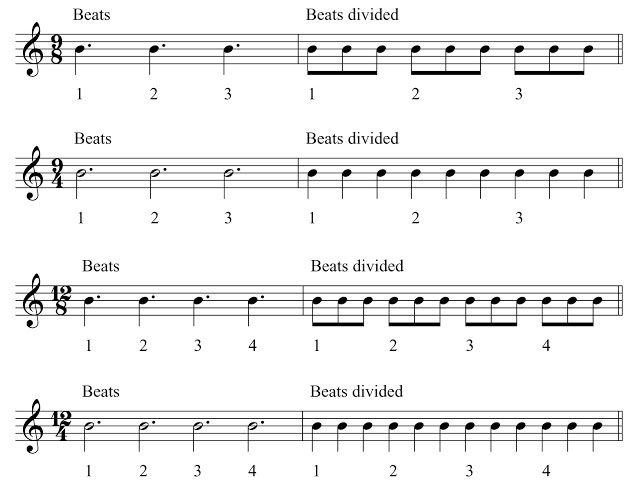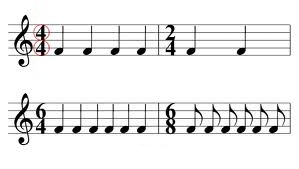6 4 Time Signature Explained

The bottom number of the time signature indicates a certain kind of note used to count.
6 4 time signature explained. It s so common that its other name is common time and the two numbers in the time signature are often replaced by the letter c. The main thing to remember is a time signature tells you. In a music score the time signature appears at the beginning as a time symbol or stacked numerals such as or 3. How many of what kind.
The number of notes allowed in each measure is determined by the time signature as you saw in the time signature examples above each time signature has two numbers. 2 4 time 3 4 time 4 4 time 3 8 time 9 8 time 4 2 time 3 1 time and so on. There are three main types of time signatures. A top number and a bottom number.
The bottom number is a symbol to indicate the type of beat. This also helps you to see that 3 2 is triple time and 6 4 is duple. A time signature is the number of beats and the type of note the beat is. In sheet music the time signature appears at the beginning of a piece as a symbol or stacked numerals immediately following the key signature or immediately following the clef symbol if the key signature is empty.
Time signatures contain two numbers. In 4 4 the stacked numbers tell you that each measure contains four quarter note beats. In later lessons i will explain meter and time signatures in much more detail. The time signature in music is represented by a set of numbers one on top of the other resembling a fraction.
Stephen clark 88 781 views. Reading the time signatures. Top number is 2 duple 3 triple or 4 quadruple main beat is split into 2. The top number indicates the number of beats in each bar.
In 3 2 the notes are beamed to the value of a minim half note but in 6 4 they are beamed to the value of a dotted minim dotted half note. The most common meter in music is 4 4. Summary of time signatures. So this means that in a 3 8 time signature we are going to play 3 quavers per bar.
Time signature explained is there really a difference between 3 4 and 6 8.
















